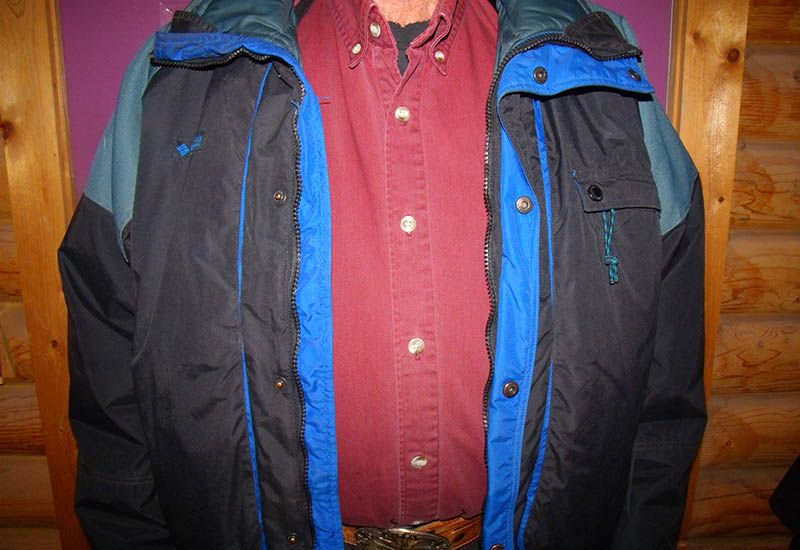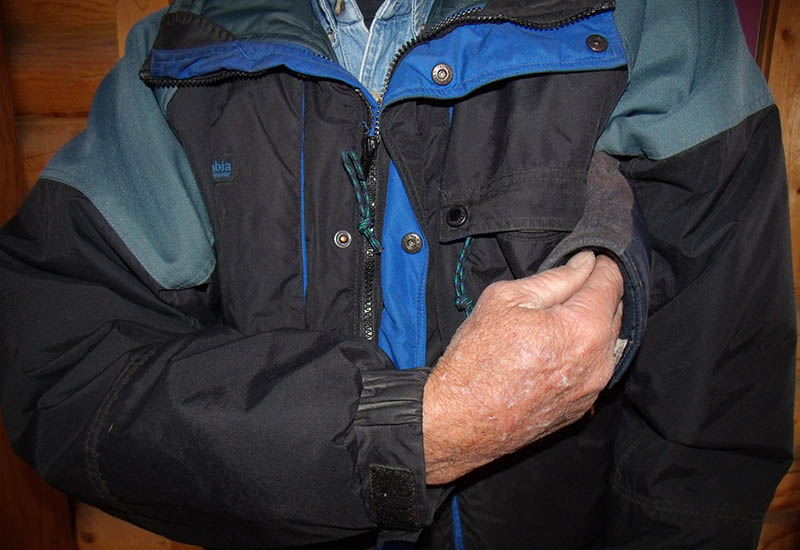
Last Updated on
Ah winter, when you can easily wear a outer garment – or two or three. Layering was finally adopted by the Military in World War II, and it is almost universal when the temperature plummets. The down side is how to access your defensive handgun under all that clothing. If you use an Inside The Waistband (IWB) rig in the summer, an Outside the Waistband (OWB) in the same location works well for concealed carry in winter. Much depends on if you wear coats or jackets, where you go and what you do.

Coats go well below your belt line, making OWB easier – and potentially harder. Obviously, a longer coat eases the concealment of your OWB holster, but the longer portion of the coat can foul your draw at the worst time. As you sweep the coat back, the bottom can come up and block your firearm or get wrapped around your hand. One solution is to put some kind of weight in the pocket – keys, a spare mag, something with some mass. I have known some people who wear coats frequently for rain or cold to sew some lead fishing weights into the bottom edge of the coat, to keep it away during their draw.

Jackets limit your choices because they usually end just at your belt line. If you reach for something high up, or there is a strong gust of wind at the wrong time, you may expose your firearm to folks who have no need to know. As I am usually in and out of my car, and rarely wear a suit, I usually wear jackets. Therefore, I tend to stay with my IWB holsters. I still “load” my strong side pocket with a spare magazine to insure my jacket stays out of the way if I need my pistol. After a winter range session, my back gets bruised from the mag hitting it when I draw, but you need to practice how you will fight!

THE alternative for winter wear, particularly when it is really cold, is a shoulder holster. Partially or fully unzipping my outer jacket gives me access, so my zipper “pull” (the little tag used to pull the zipper) all have longer tags tied to them. Again, practice, both dry fire and with ammo, is mandated to insure you can employ your handgun when you really need it. The live fire is needed to insure every shot will land on the attacker and not end up addressed to whom it may concer’, as now your pistol is traveling across the target, rather than up the target. The down side to these rigs is often you will want to take off your outer jacket, but that will expose your rig. Once again, layering a light garment under your heavy jacket or coat will solve this problem. Just make sure the lining of your heavy coat will slide over you inner cover, or you may end up pulling them both off, to your dismay.

Where you go, and what you do
At one time I worked in an old, historic building which still had the old-fashioned steam radiators. The offices on the higher floors got overheated, while the lower floors were cold. On those floors, a desk next to a radiator was always used by the senior employees. These days, modern building usually have good heating systems, so your outer coat/jacket comes right off. But if you end up in a warehouse, or just outside, talking to someone or filling your car with gas, you will need that heavy outerwear. When I am just running around town, doing chores, my jacket stays on but gets unzipped inside shops.
A day at the range is a whole different story – my inner garment stays closed, and my outer jacket may be zipped all the way up as well. If I have to spend time outside, I may do the old cop trick, and slip a hammerless 2” .38 revolver in my outer pocket in addition to my every day carry gun – just in case.
Gloves
It’s cold outside, so you start to wear gloves. Reasonable, but a potential problem if some outlaw wants your money to get warm. If you wear thin, flexible gloves, you can shoot with them on – IF the trigger guard of your pistol is large enough. Dry fire practice is the way to find out. A too thick glove or if you have large fingers and a thin glove can cause a undesired BANG! Find out with an empty gun.
If your gloves are loose on your hand, you may be able to flick it off with a quick snapping motion to the side or down. I prefer to bring my strong hand up into my support side armpit, clamp my support arm down, and pull the glove off my hand. This takes longer to describe than perform, but give it a try. It only adds a small increment of time to my draw. Just make sure you can do this with the actual gloves you wear, not your old worn out pair. Slick nylon gloves and a slick nylon ski jacket can require a lot of clamping force.

The Other Guy
Winter also means the bad guy will be heavily dressed as well. Think about someone wearing a heavy leather jacket over a surplus wool coat. There are documented cases of folks dressed like this getting shot at with smaller caliber guns, and the rounds failed to penetrate their clothing! .25’s, .32’s, and even .380’s have failed.
A close friend was forced to shoot someone who was sitting down, while wearing a heavy military wool coat. When he stood up, my friend saw the bullets fall out of his coat! (After that, my friend did the right thing and ran as fast as the wind!) He then gave up his .380 and went to something bigger – a .45! This is just one of the reasons that modern JHP personal defensive ammo may have a polymer tip. It keeps the hollow point from clogging with coat material.
Cold also has a numbing effect on humans, so the outlaw may seem impervious to your shots beyond the effects of the drugs in his/her system. If you live where it gets cold, both your ammo or gun choices may change. I strongly suggest that if you do switch, use the same action type!
Don’t shift from a sub-compact single action auto to a full-size striker fired auto, and expect to be able to “run your gun” with full effect in a high stress, life threatening situation without practice. Make sure your winter ammo works as well in your gun as your three season fodder. I even found that I need to change my lubricants too! I had used a heavy grease for lube on one of my competition guns and forgot to change it for a sudden cold spell. With the gun holstered and exposed to the cold for a couple of hours before my first shot, the gun got “acclimated.” For the first 2 stages, I could see the slide of that .45 slowly recoil, stop, and slowly try to chamber the next round. After the first 20 or so rounds, it warmed up, only to run slow again on the next stage. Lesson learned and taken to heart! Now, all grease gets removed the first day we drop below freezing, and a thinner oil type lube is used until the freezing season is over.
Winter is a great time of year for all kinds of outdoor sports. For shooters, it’s a time to make repairs, load ammo, and catch up on your reading about guns and ammo and holsters. Dry fire can keep, and even improve your skills. But when you go out, recall that bad guys go out in cold, snowy weather as well. Select your gun, ammo, and holster with care, try it out dry (no ammo), and enjoy the cooler temperatures. Soon enough it will be hot, and your choices may change with the seasons!




Leave a Reply